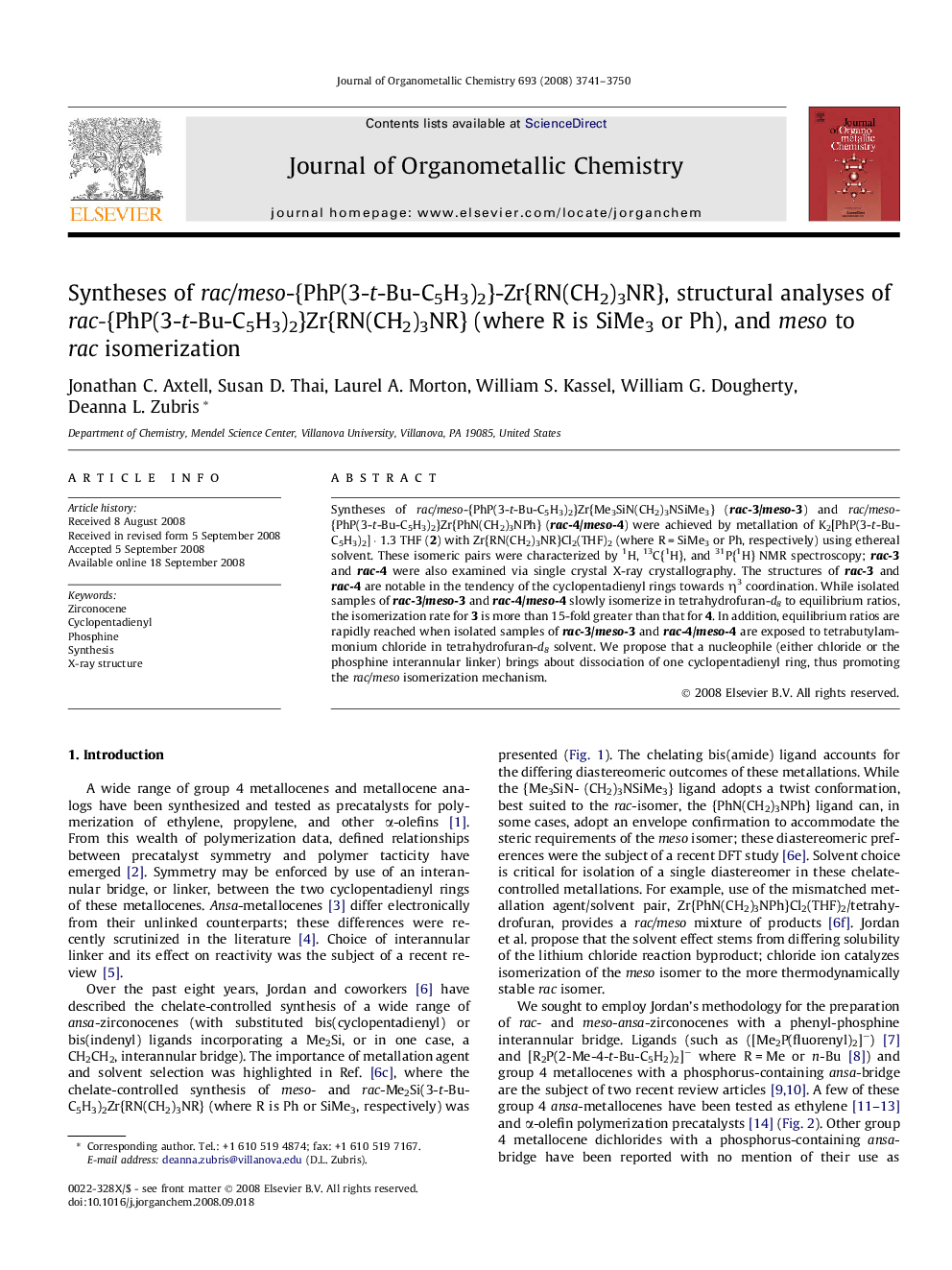| Article ID | Journal | Published Year | Pages | File Type |
|---|---|---|---|---|
| 1327847 | Journal of Organometallic Chemistry | 2008 | 10 Pages |
Syntheses of rac/meso-{PhP(3-t-Bu-C5H3)2}Zr{Me3SiN(CH2)3NSiMe3} (rac-3/meso-3) and rac/meso-{PhP(3-t-Bu-C5H3)2}Zr{PhN(CH2)3NPh} (rac-4/meso-4) were achieved by metallation of K2[PhP(3-t-Bu-C5H3)2] · 1.3 THF (2) with Zr{RN(CH2)3NR}Cl2(THF)2 (where R = SiMe3 or Ph, respectively) using ethereal solvent. These isomeric pairs were characterized by 1H, 13C{1H}, and 31P{1H} NMR spectroscopy; rac-3 and rac-4 were also examined via single crystal X-ray crystallography. The structures of rac-3 and rac-4 are notable in the tendency of the cyclopentadienyl rings towards η3 coordination. While isolated samples of rac-3/meso-3 and rac-4/meso-4 slowly isomerize in tetrahydrofuran-d8 to equilibrium ratios, the isomerization rate for 3 is more than 15-fold greater than that for 4. In addition, equilibrium ratios are rapidly reached when isolated samples of rac-3/meso-3 and rac-4/meso-4 are exposed to tetrabutylammonium chloride in tetrahydrofuran-d8 solvent. We propose that a nucleophile (either chloride or the phosphine interannular linker) brings about dissociation of one cyclopentadienyl ring, thus promoting the rac/meso isomerization mechanism.
Graphical abstractPhosphine-linked ansa-zirconocenes of the form rac/meso-{PhP(3-t-Bu-C5H3)2}Zr{RN(CH2)3NR} (where R is SiMe3 (rac-3/meso-3), Ph (rac-4/meso-4)) were prepared and characterized by 1H, 13C{1H}, and 31P{1H} NMR spectroscopy; rac-3 and rac-4 were also examined via single crystal X-ray crystallography. Observations of meso to rac isomerization in these systems are also presented.Figure optionsDownload full-size imageDownload as PowerPoint slide
